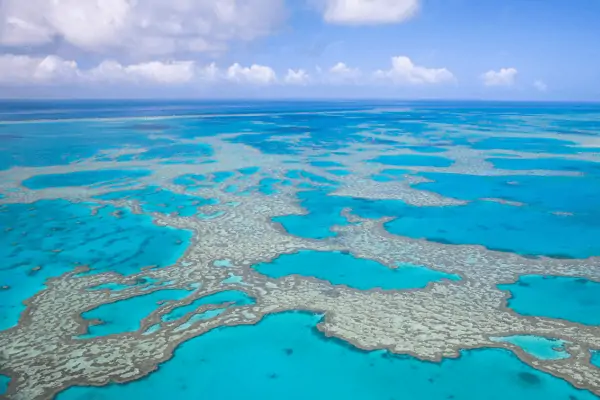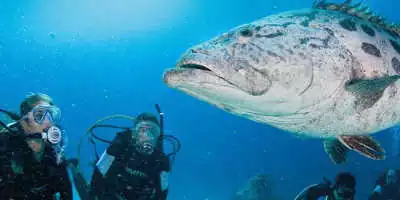
5 facts about Great Barrier Reef sharks
Written by: Cameron Ward
Published: 01/22/2024
Reading time: 3 mins
When visiting the Great Barrier Reef, there is a chance you may get to see a reef shark.
There is a chance that you will see a shark while swimming around the Great Barrier Reef. However, the chances of this are quite slim. Your reef tour guide carefully selects a snorkelling location each day and takes great care to keep you safe.
Whether you spot a shark reef shark or not, they are quite fascinating creatures. Below are a few facts about the sharks that live near the Great Barrier Reef.
1. Around 50 species of sharks call the Great Barrier Reef their home
There is a wide range of shark species that live near the Great Barrier Reef. However, there are three species that are most common in the area. They are the whitetip reef shark, the grey reef shark, and the blacktip reef shark. Some other kinds of sharks you may spot are the Great Hammerhead shark or the bottom-dwelling Lemon shark.
2. The sharks are mostly harmless
Like any animal, you should take care not to provoke it. Remember that you are in the sharks’ home, so don’t approach them. The sharks swimming around the Great Barrier Reef are mostly harmless. Just be sure to stay out of their way and don’t try to feed or touch them.
3. They tend to be more active at night
Sharks are most active in the evenings. Because of this, it is not recommended to swim in the evenings as the sharks can be difficult to spot. If you are diving or swimming in the evening, take extra precautions.
The evening is when they will spend most of their time hunting. They eat fish, molluscs, crustaceans, and other organisms found around the reefs.
4. Some reef sharks birth up to four pups each year
You may be surprised to learn that some sharks lay eggs and others do not. Even though they are considered fish, some reef sharks don’t lay eggs. Instead, they birth shark pups.
Each species differs but the Blacktip shark, for example, births four to ten pups every two years. When the pups are born, their mothers will keep them in shallow water to avoid predators.
5. Sharks can’t see in colour
It seems that most shark species are colourblind. They are able to distinguish between light and dark but mostly see various shades of black, white, and grey. Wearing blue or grey diving gear may make it more difficult for sharks to see you due to low contrast against the ocean water.
After learning about reef sharks, hopefully, you are more fascinated than afraid. These sharks play an important role in the habitat around the Great Barrier Reef and help maintain the gorgeous ecosystem we appreciate today.









